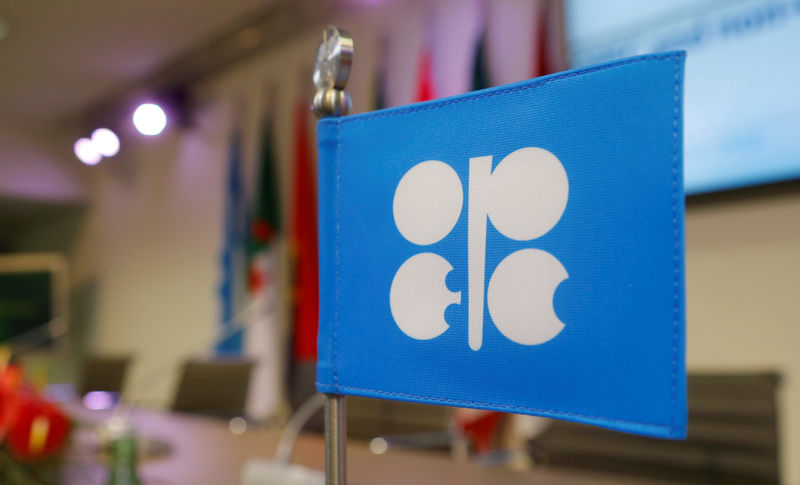By Alex Lawler and Rania El Gamal
LONDON/DUBAI (Reuters) - OPEC is unlikely to deliver fully on its target to cut production despite Saudi Arabia saying it had trimmed more than it had committed to, OPEC delegates say, but compliance of 80 percent would be good and as low as 50 percent acceptable.
The Organisation of the Petroleum Exporting Countries is planning to cut its output by 1.2 million barrels per day to 32.50 million bpd from Jan. 1. Russia and other non-members are planning to cut about half as much.
OPEC and the independent producers are cutting production to remove a global glut and prop up prices, which at $56 a barrel (LCOc1) are half their level of mid-2014, hurting the revenue of exporting nations.
"Compliance won't be 100 percent, it never is," said an OPEC source, who added that an overall rate of 50 to 60 percent would be good enough, based on past compliance levels.
Top exporter Saudi Arabia and Kuwait said on Thursday they had cut production by more than they committed to. Kuwait, the head of a committee to monitor compliance which meets on Jan. 22, said this was to "lead by example".
But OPEC as a whole has a patchy record of complying with its agreements, and previous non-OPEC pledges to curb output have proved largely token. Compliance is voluntary as OPEC has no mechanism to enforce its agreements.
Based on statements by producing nations so far, there has been more than 60 percent compliance, Kuwaiti Oil Minister Essam Al-Marzouq said on Thursday.
Last time OPEC cut its output, in 2009, following agreements the year before, it initially made 60 percent of the reduction and compliance peaked at higher rates, according to estimates from the International Energy Agency and other analysts, some of whom see that as a reasonable target this time.
"We should see 60-70 percent compliance once again," Daniel Gerber of Petro-Logistics, a consultant which assesses OPEC supply by tanker tracking, told Reuters in December.
The cuts in 2009 were more than OPEC achieved in previous price collapses, such as during the late 1990s when countries initially did not follow through on pledges. OPEC's historical average compliance rate is 60 percent, according to the IEA.
"Normally for OPEC, good compliance is near 80 percent," said another OPEC delegate. "It won't be 100 percent."
COMPLIANCE CONCERNS
Compliance with the 2009 OPEC cuts peaked at about 80 percent, according to the IEA. This was enough to help support a rise in oil prices, which began 2009 at $46 and stood at $69 by the end of June that year.
Three months into that last OPEC cut, Saudi Arabia and its Gulf allies showed the highest level of adherence. Saudi Arabia made a larger cut than it had to then, based on the IEA numbers, so history looks set to repeat itself in 2017 if Saudi Arabia's comments on Thursday are borne out.
Next was Algeria, which implemented almost all of its commitment. Venezuelan compliance was 69 percent, more than that of Angola and Iran which both delivered less than half of their pledged reduction.
This time, while compliance in the Gulf OPEC members is expected by analysts to be high, industry and OPEC sources do not expect a similar level across the board.
"There is a concern about Venezuela and Iraq not being committed to the cuts," said an industry source involved in the global cut talks, who added Russia appeared to be complying with the deal.
Iraq, which initially resisted joining the cut, said this week it was reducing production. Cash-strapped Venezuela, which pushed hard to bring the global deal together, has also said it intends to.
Russia reduced production by 100,000 barrels a day in the first few days of January, industry sources told Reuters. That reduction, or at least part of it, is down to unusually cold temperatures in Siberia that have forced work at oil rigs to grind to a shivering halt.
Potential production growth in countries exempted from making a cut, Libya and Nigeria, could undermine reductions elsewhere. They both boosted production in December, even though OPEC supply overall fell.

"If things go well in those countries, it could be quite hard for OPEC to maintain a 32.50 million bpd production target," Gerber of Petro-Logistics said.